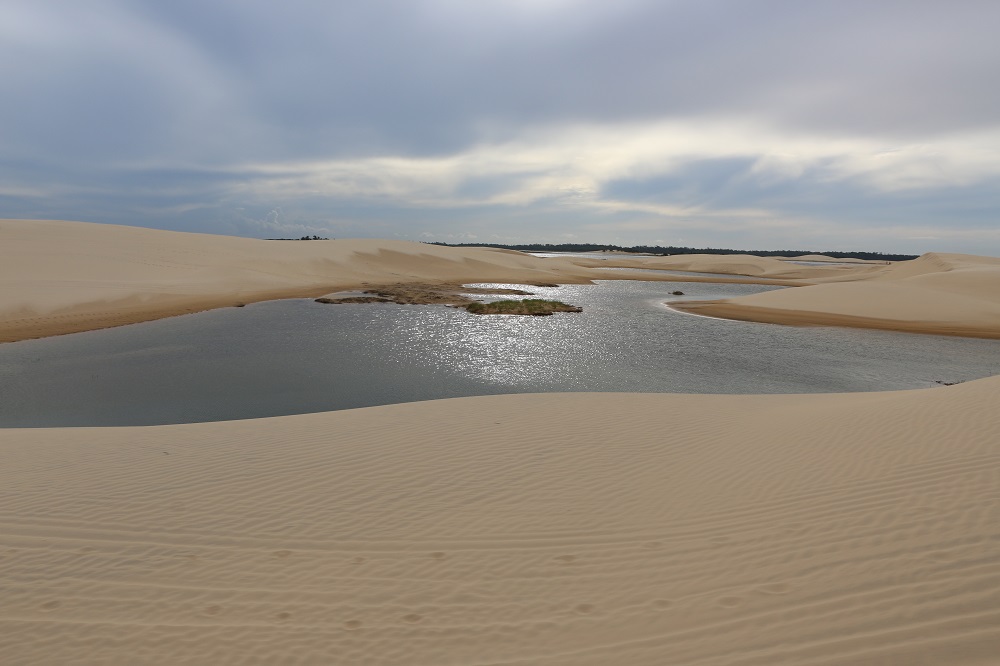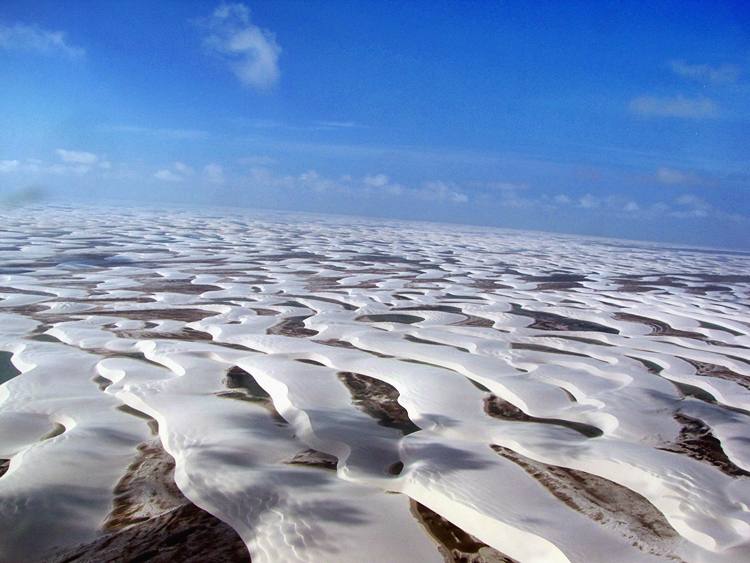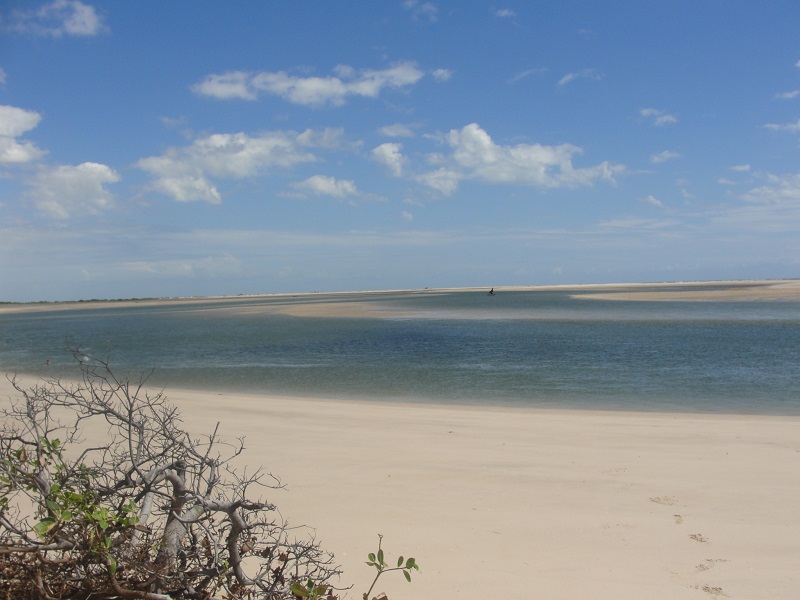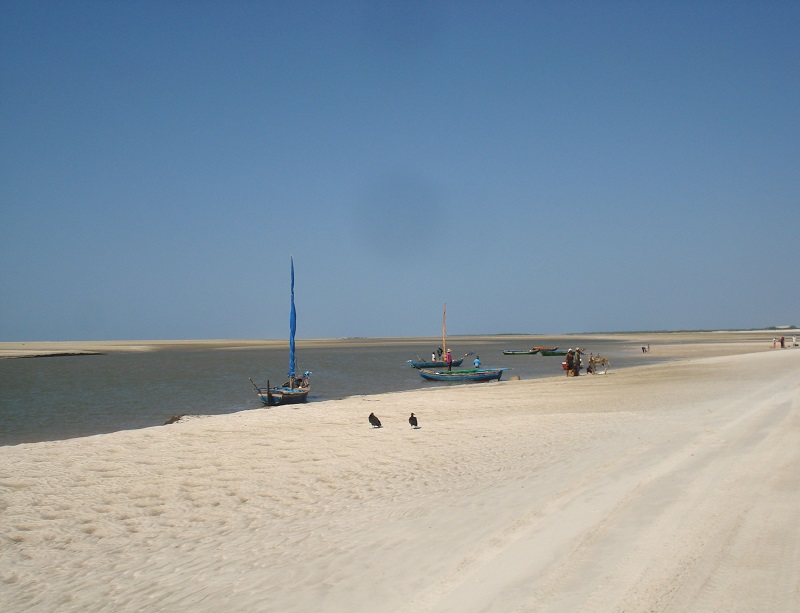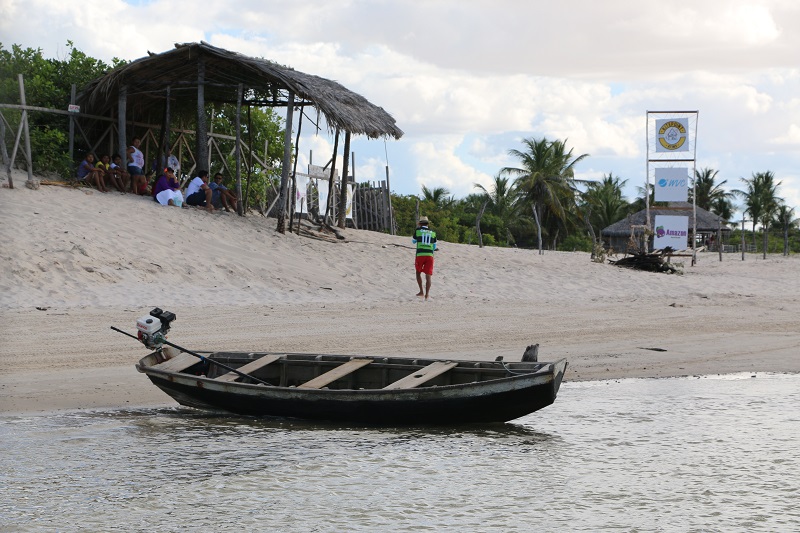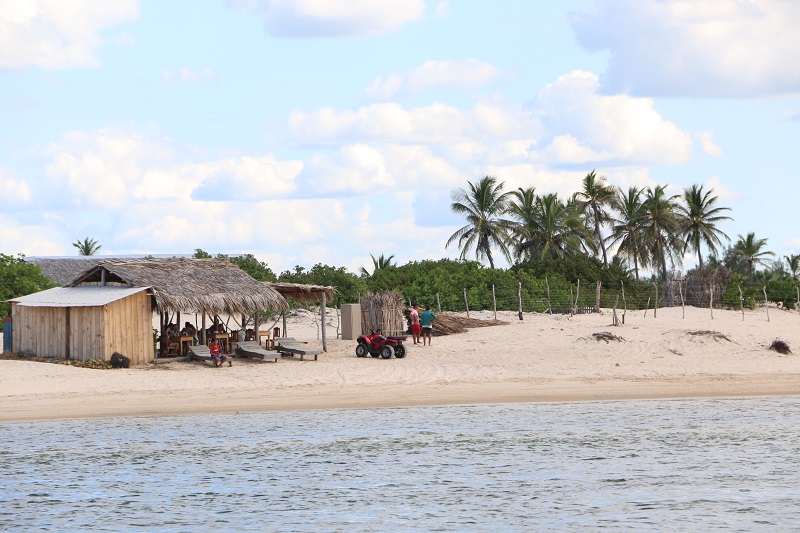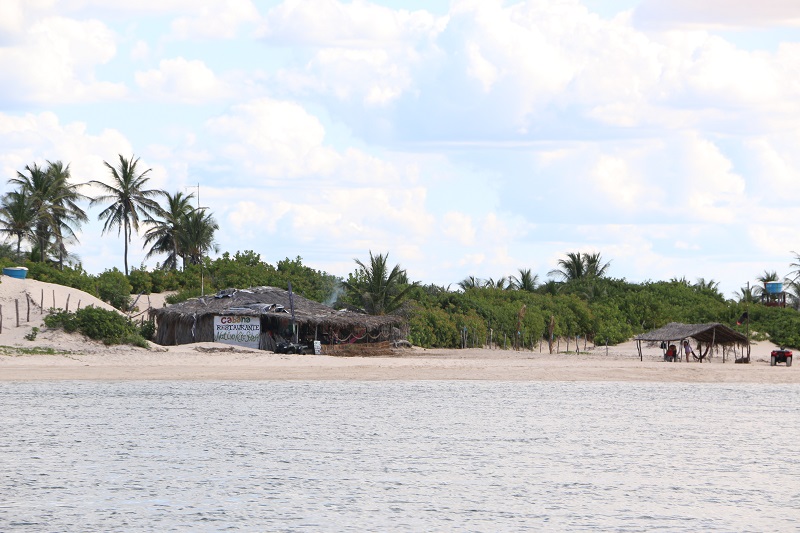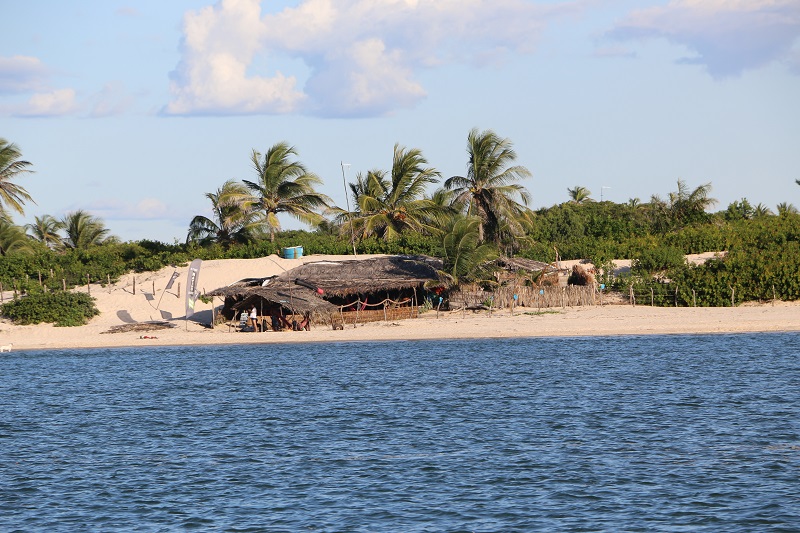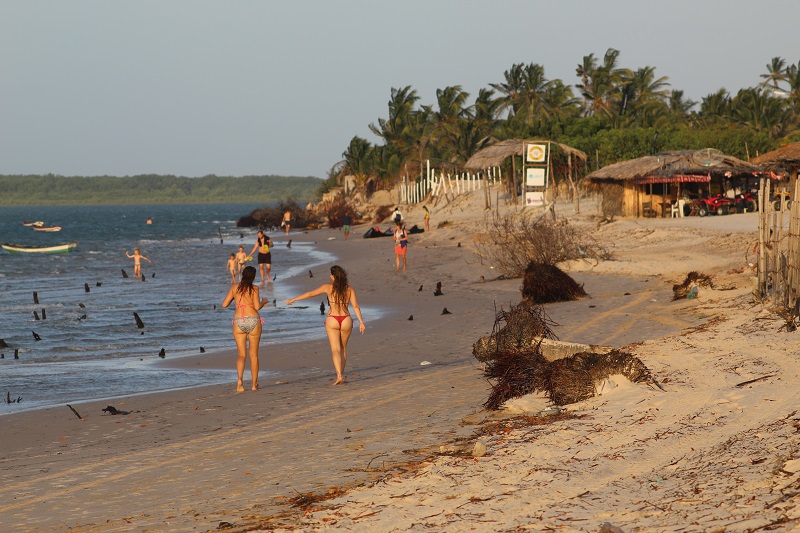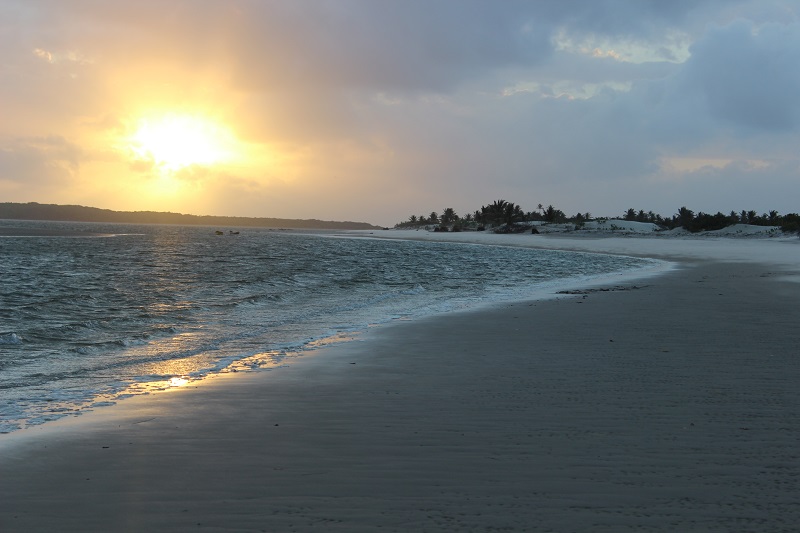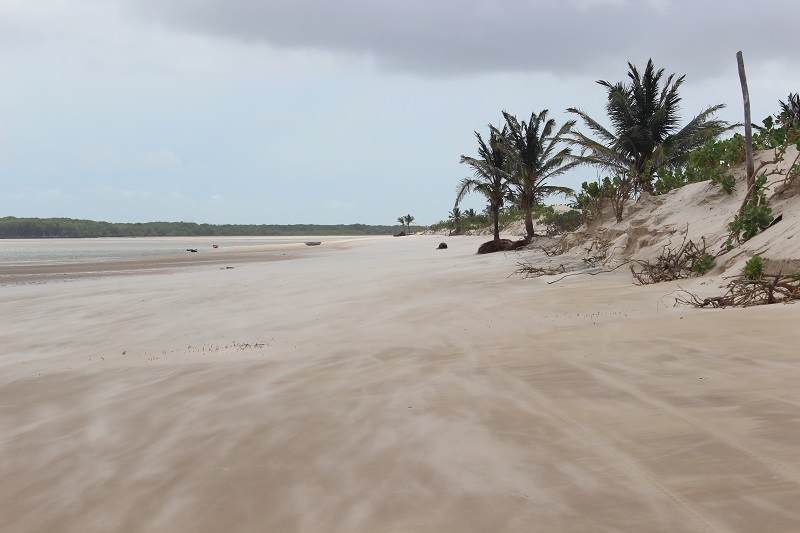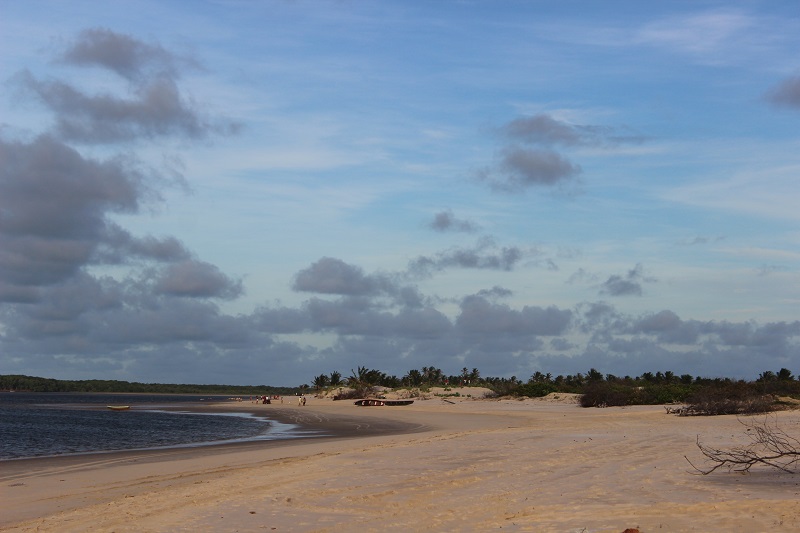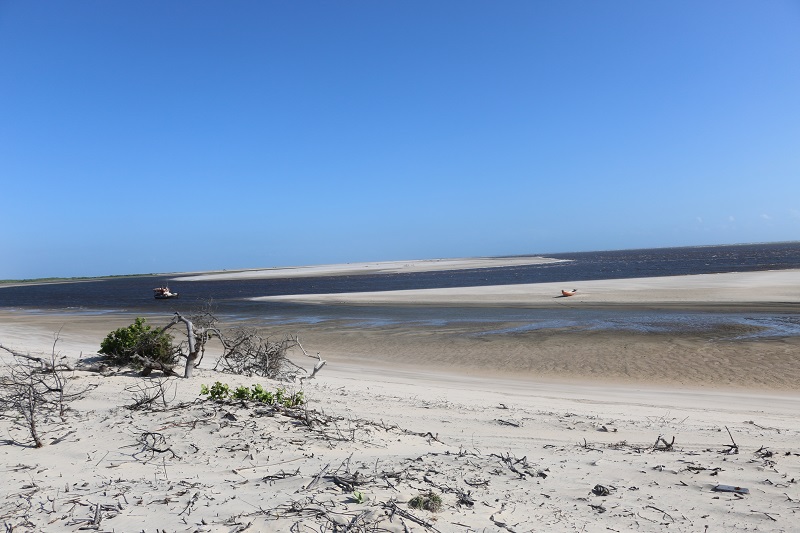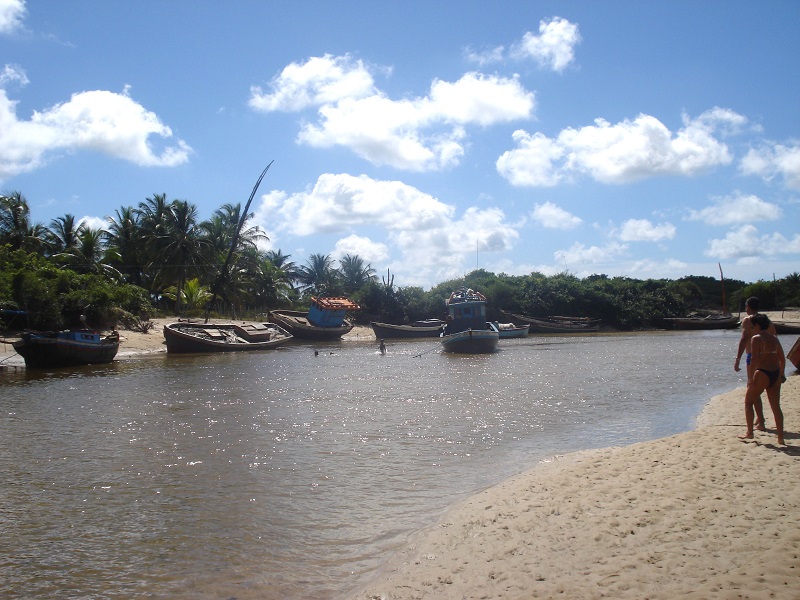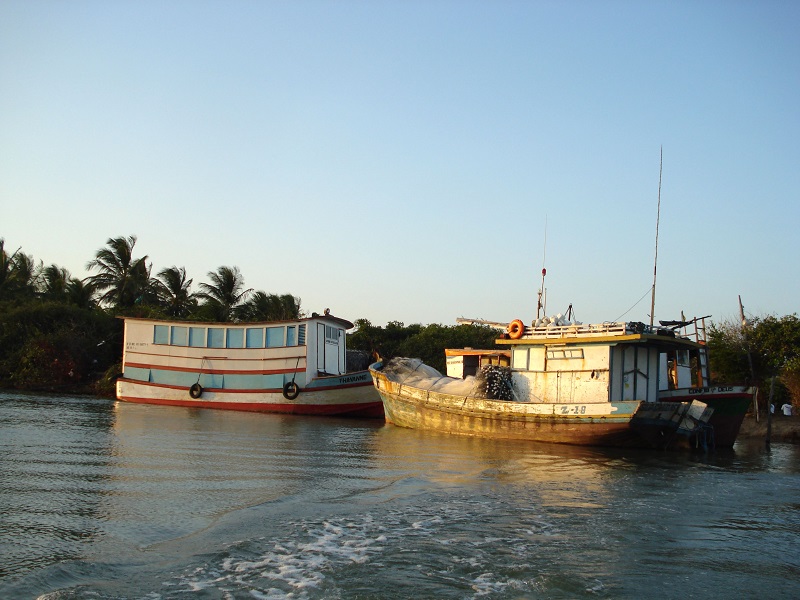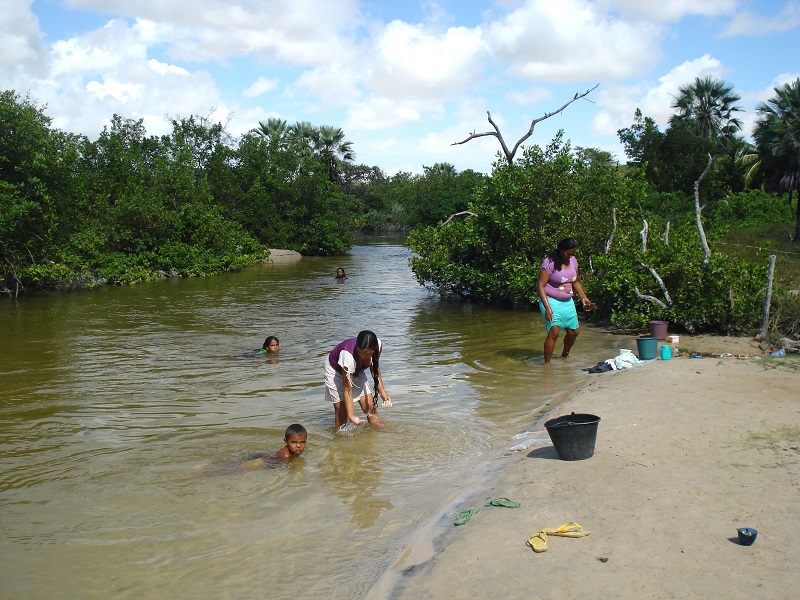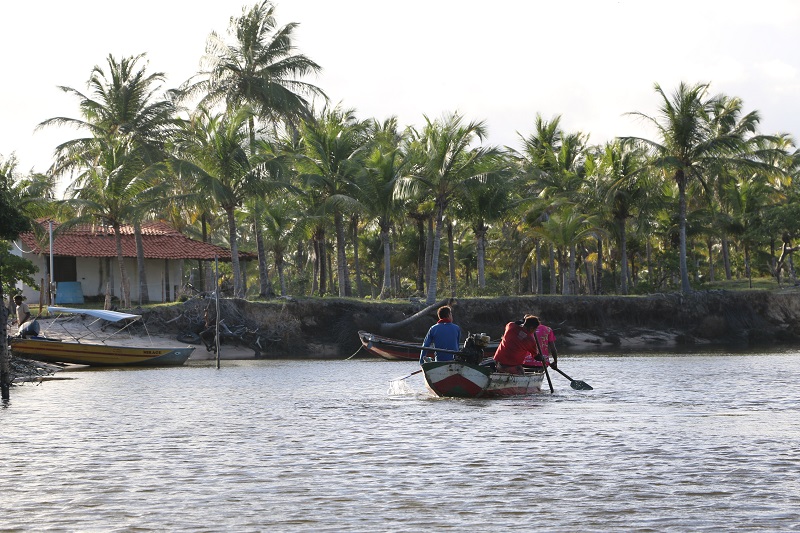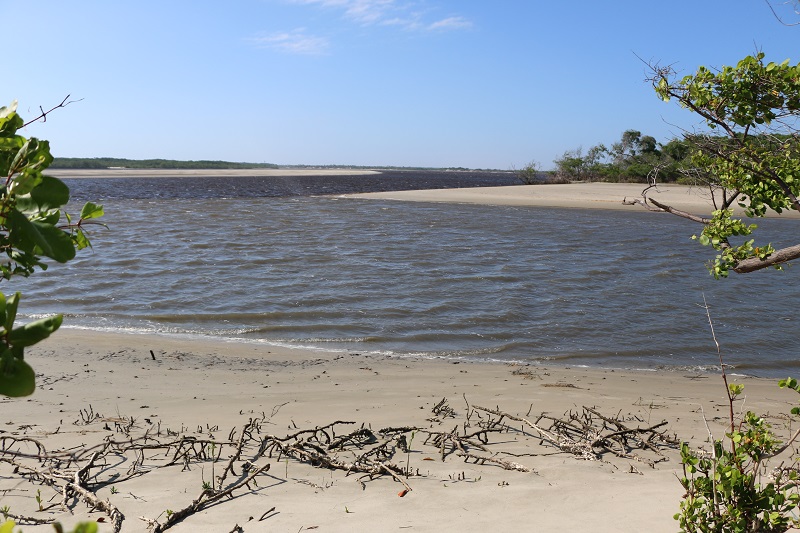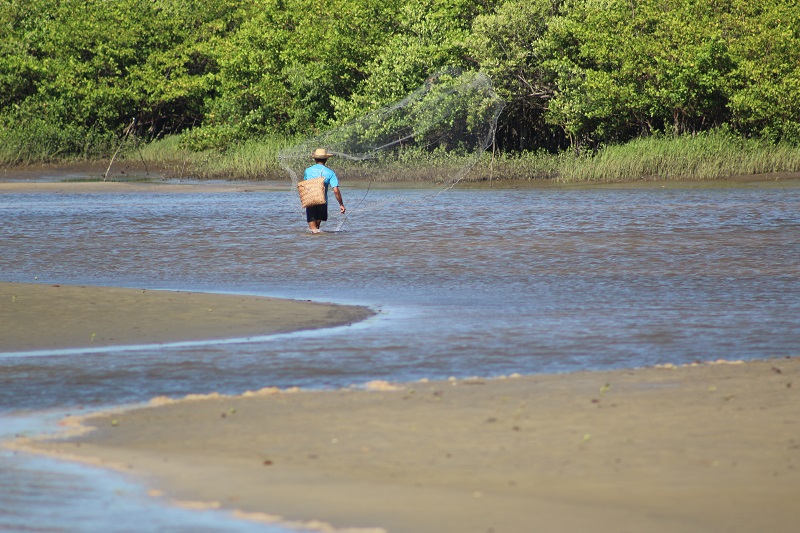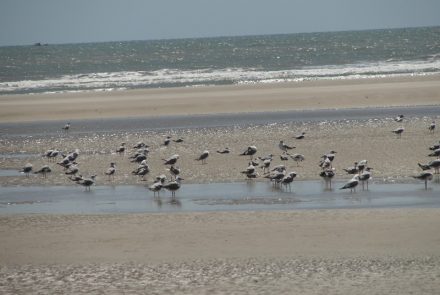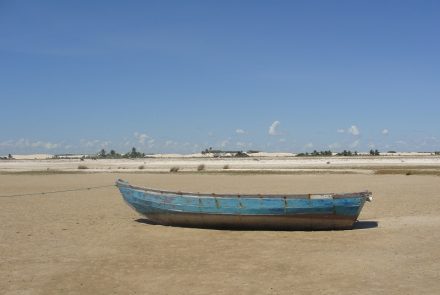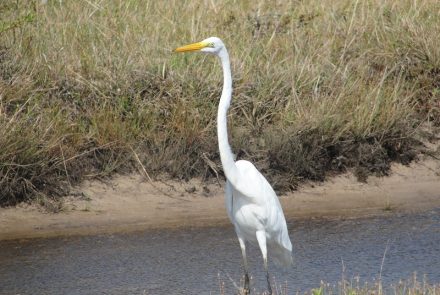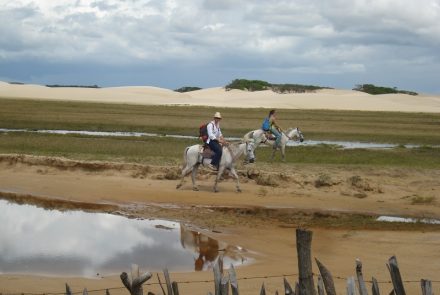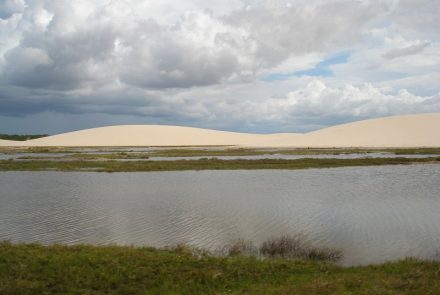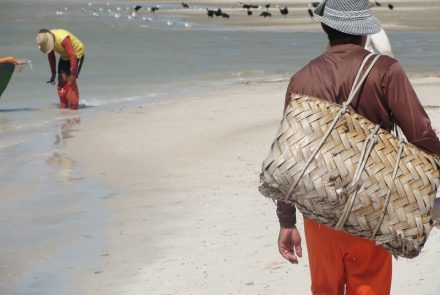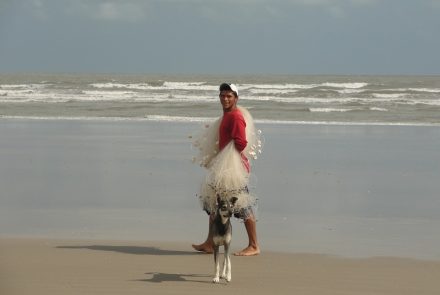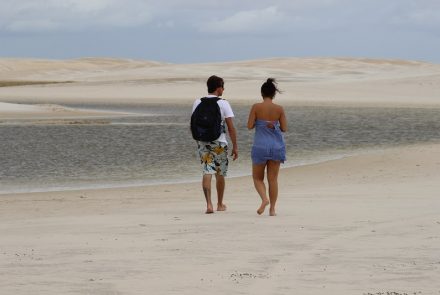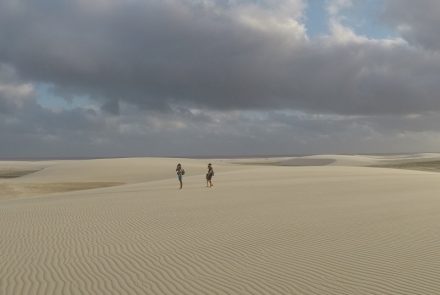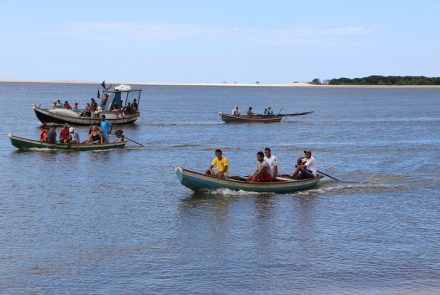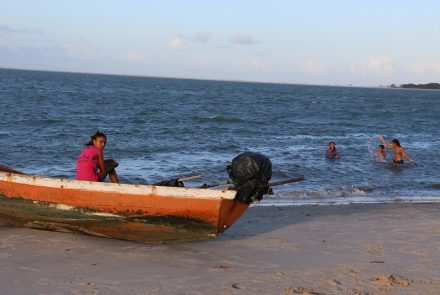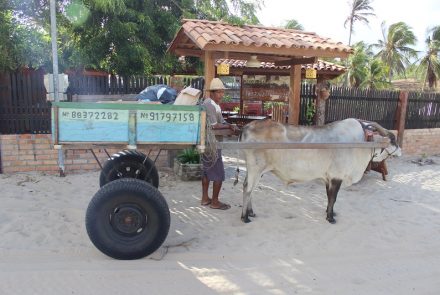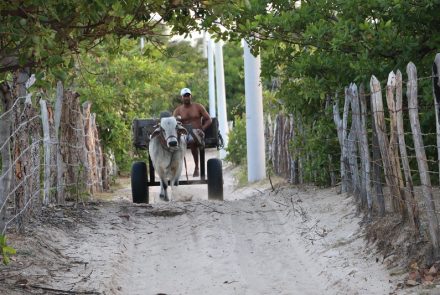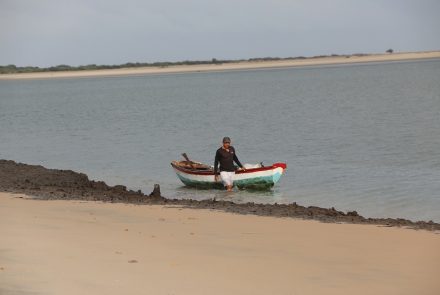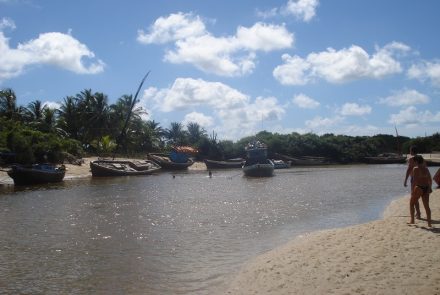Atins
Atins Community in Lencois Maranhenses
The Pousada Jurará / Vila Jurará is located in the village of Atins, Maranhense municipality of Barreirinhas.
This community formed over time on the shores of the Atlantic Ocean by fishermen who had in this activity their main means of livelihood. Family fishing served both to provide for subsistence of food and to measure some income from the surplus of fishing that was traded in the village itself.
With the passage of time and the arrival of the tourist activity, due to its impressive natural beauty, as well as the proximity to the Lençóis Maranhenses National Park, fishing activity became secondary but still persists, as well as the bucolic climate of the village, with its simple life that is one of the main attractions of the place.
The population, as we have said, still lives on fishing, a little agriculture and especially tourism and maintains its peculiar habits. It is still possible to see women at the doors of houses weaving straw for crafts, men weaving fishing nets or making fishing instruments, children playing in backyards or on the street with original toys, horses and knights going from one place to another, carts of oxen who carry goods, fishermen leaving and arriving from the sea, others pulling hammocks on the beach, dividing the fruit of the fishing right there in the sand, boys and girls entering and leaving school with their well-kept uniforms and other signs of originality.
Can you imagine the climate that this local life creates in the village? It is a ransom from those simpler dreams of happiness that we all have or had at a given moment.
These peculiarities make the village of Atins a rare jewel of the Brazilian coast. Few beaches still maintain this wild aspect of nature and primitive in the habits and customs of social life. Life in the Atins obeys other principles, either by its singularity or by the local culture still very close to the natural simplicity of the northeastern backlands, where very little subsists with creativity and originality.
Spend a few days in the Atins in this uncluttered and relaxed environment, in contact with the simple and hospitable people of the place, living and observing their habits, customs, food and their particular way of speaking, while integrating us into an archaic and primitive society, it reorients us as to the meaning of an urban life dependent on the benefits and comforts that it provides and at the same time enslaves us.
As we experience the experience of observing and for a few days realize how it is possible to live with so little we rethink some aspects of our lifestyle and reorganize our demands and priorities.
Atins is more than a tourist trip is a life experience within reach of all of us.
Igarapé do Atins in Lencois Maranhenses
The Igarapé do Atins descends sinuously through the vegetation and will flow into the sea, slowly and smoothly.
During the flood season, between March and July, due to the rains, the water in greater volume descends towards the sea and makes the igarapé predominantly sweet. In the dry months, during the rest of the year, its bed is now salty due to the predominance of seawater that rises from its bed in the full tide and sometimes dry, when the tide is low.
In one situation or another, walking along its winding riverbed is a pleasant walk for sunrise or sunset. You can find laundresses on the banks of the laundress by washing the clothes that have just been washed.
The wild vegetation and those grown in backyards blend and form a natural garden of rare beauty.
Village of the Atins in Lençóis Maranhenses
The village of Atins is a quiet village between the Atlantic Ocean and the Preguiças River which has a population of approximately 1,500 inhabitants living in humble houses scattered throughout its territory. There is not a traditional urban aspect of town. It is a typical town in the interior of Maranhao with many adobe brick houses covered with buriti straw and others more well finished but with a rustic architecture and characteristic of the region, built in some cases in a dispersed form, a little distant from each other.
Good native restaurants offer the tasty food of Maranhão in totally rustic, pleasant and cozy environments. There are also a few restaurants of locals who explore the local tourism and who are of quality.
Walking through its fine sand streets with detachment and letting yourself go by chance without time to leave and arrive can be a great experience of integration with the community.
Come and meet a Brazil that is still unexplored and unknown. Have the privilege of knowing this deepest and most original Brazil, will surely be unforgettable.
Canto do Atins in Lencois Maranhenses
Going to Canto do Atins is a walk away. On the way to the main lagoons of the region of the sheets, to get to the Canto do Atins, it is necessary to cross a large part of the village and take a field of undergrowth where you can find owls, hawks, herons, different species of other birds, , horses, etc.
During the flood season, in the fields, small ponds are formed where the fauna comes to seek its attractions and the image of the immense grass is transformed. In the region of Lençóis Maranhenses, geography is mutant all year round. From the walk of the dunes, the supply of fish, the formation of ponds, etc., everything is related to the climate and the time and in constant movement. The landscape you see in winter is not the same as you will see in the summer.
At Canto do Atins you also find two good restaurants for your meals. Luzia’s Restaurant and Antônio’s Restaurant. In all two you can enjoy great food, drink and welcome. Do not forget to taste the grilled shrimp that is the flagship of the two restaurants and is a dish delicacy, cooked in the ember. Very juicy and tasty goes very well with a cold beer, protected from the scorching sun that makes here. There are other dishes as well and other alternatives to drinks such as water and soda.
Enjoy your time with us, enjoy what Atins has the best.
Beach of the Atins in Lencois Maranhenses
The coast that begins in the Atins has approximately 70 kilometers of beaches, but the initial stretch, most frequented by bathers, is approximately 1,000 meters.
The movement of tides and winds constantly changes the geography of the beach. In the dry tide forms huge sand banks where you can cross the swimming or even walk. The beach at certain moments almost deserted has a wild, wild landscape and forms an interesting sinuosity in which it contrasts the sea and the field of sand and grass, as well as some low wild vegetation.
Its sand is fine and in the season of the winds it is possible to see it running on the wetter soil forming a ballet at its feet.
Being an estuary, a transitional aquatic environment between a river and the sea, its waters are saltier at low tide and more brackish at full tide. They are almost warm and the soil has some depressions. You should keep an eye out, especially with the children.
The sunset at Atins beach is a spectacle of colors and lights ranging from bluish to orange to lilac, guaranteed almost every day of the year, except for passing clouds.
Some tents serve drinks and food at the edge of the beach, two tips the shrimp booth in the middle of the beach and the Izabel tent at the end of the beach that prepares some delicious snacks and small meals.

